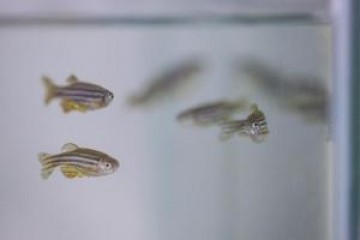Identifying and addressing challenges in fish vitellogenin assessment

At a glance
Contents
Overview
Vitellogenin (VTG) is the egg-yolk precursor protein commonly measured in ecotoxicological tests in fish to identify the potential endocrine activity of chemicals. VTG data can be highly variable, meaning that additional fish testing may be required to address uncertainties in the VTG response. We formed a working group of experts to understand and address the causes of this variability, improve the robustness of VTG data and reduce unnecessary additional fish testing.
Harmonising measurement of VTG in fish
In 2021, in collaboration with an expert working group, we conducted an international survey of 16 laboratories with varying degrees of experience in conducting VTG assessment in regulatory studies. We surveyed laboratories from the UK, USA and EU carrying out VTG analysis and identified technical challenges in measuring VTG and variation in interpreting results.
The survey results identified several aspects that contribute to variability in VTG and provides a basis for improving and harmonising the measurement of VTG in fish across the various relevant test guidelines. We are currently working on next steps to provide an OECD Guidance Document outlining best practice to support the laboratories conducting this type of analysis, to reduce the incidences of equivocal VTG results and reduce unnecessary additional fish testing (see below). Uptake of these recommendations will lead to more robust analysis and avoid unnecessary repeated testing or additional tests in fish.
Robustness of VTG assessment
Alongside this, we participated in a general review of VTG measurements in fish based on study data with 106 substances. This showed that VTG is a reliable biomarker for endocrine activity, but highlighted high variability between studies and laboratories which could trigger additional unnecessary tests in fish. This work also builds the evidence base supporting application of New Approach Methodologies (NAMs) to predict VTG responses in fish to support a reduction in animal testing, by demonstrating that in vitro tests using mammalian cell lines are predictive of the in vivo VTG response. This review formed the basis of a decision logic for the reliability assessment and interpretation of VTG measurements.
Developing an OECD Guidance Document
The most impactful guidance to ensure improvements to VTG assessments are made is an OECD Guidance Document which harmonises approaches and provides more clarity and detail on best practices for VTG assessment in Test Guideline studies. To develop an OECD Guidance Document, a project must be proposed for inclusion in the Test Guidelines Workplan and agreed by all 38 OECD member countries.
To gain consensus on what should be included such a Guidance Document, based on our previous survey and literature review, we held an expert workshop at the SETAC Europe annual meeting in 2024. The workshop brought together international experts in the field, including laboratories generating VTG data, government/regulatory agencies that use VTG data in decision-making, industry sponsors of the studies, VTG method developers/kit suppliers, academia, consultancy and other not-for-profit scientific organisations. A report outlining workshop discussions is co-authored by 42 experts who attended the workshop.
Based on these workshop discussions, a project proposal for the development of an OECD Guidance Document on fish VTG assessment was submitted to the OECD, with the UK and Denmark supporting as the lead countries. The proposal was considered by OECD member country experts and was agreed by all to be accepted as a formal OECD project in April 2025. The OECD project formally kicks off in early 2026, will publication of the Guidance Document anticipated in 2028.
NC3Rs project working group members
| Name | Affiliation |
|---|---|
| Dr Natalie Burden | NC3Rs |
| Dr Grace Panter | wca Environment Ltd |
| Dr Rebecca Brown | wca Environment Ltd |
| Prof Dr Lennart Weltje | BASF SE, Agricultural Solutions – Ecotoxicology |
| Dr Edward Salinas | Bayer AG, R&D Crop Science, Environmental Safety |
| Dr Yvonne Wolf | Bayer AG, R&D Crop Science, Environmental Safety |
| Dr Laurent Lagadic | Bayer AG, R&D Crop Science, Environmental Safety |
| Dr James Wheeler | Corteva Agriscience |
